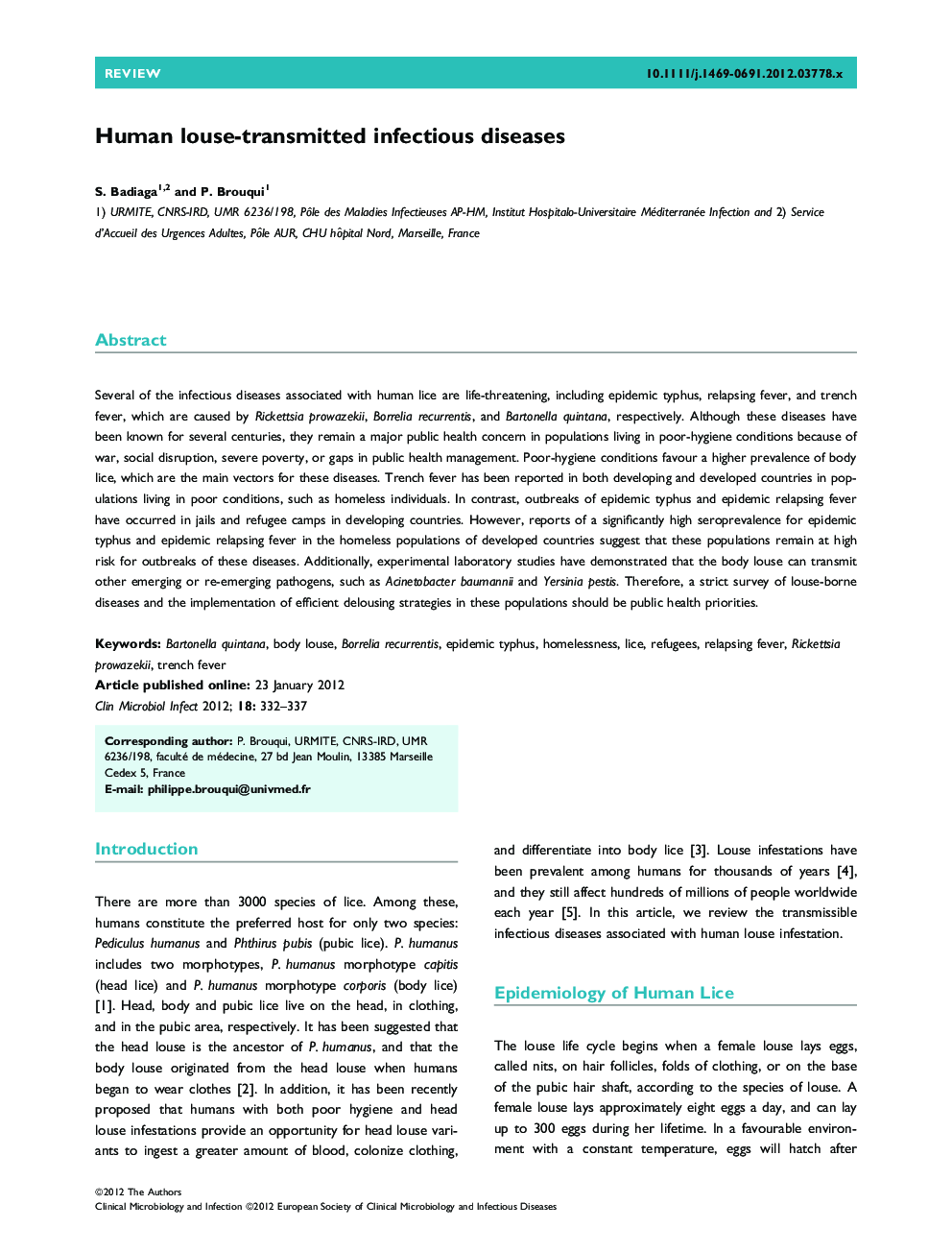| کد مقاله | کد نشریه | سال انتشار | مقاله انگلیسی | نسخه تمام متن |
|---|---|---|---|---|
| 6131126 | 1222206 | 2012 | 6 صفحه PDF | دانلود رایگان |
عنوان انگلیسی مقاله ISI
Human louse-transmitted infectious diseases
دانلود مقاله + سفارش ترجمه
دانلود مقاله ISI انگلیسی
رایگان برای ایرانیان
کلمات کلیدی
موضوعات مرتبط
علوم زیستی و بیوفناوری
ایمنی شناسی و میکروب شناسی
میکروب شناسی
پیش نمایش صفحه اول مقاله

چکیده انگلیسی
Several of the infectious diseases associated with human lice are life-threatening, including epidemic typhus, relapsing fever, and trench fever, which are caused by Rickettsia prowazekii, Borrelia recurrentis, and Bartonella quintana, respectively. Although these diseases have been known for several centuries, they remain a major public health concern in populations living in poor-hygiene conditions because of war, social disruption, severe poverty, or gaps in public health management. Poor-hygiene conditions favour a higher prevalence of body lice, which are the main vectors for these diseases. Trench fever has been reported in both developing and developed countries in populations living in poor conditions, such as homeless individuals. In contrast, outbreaks of epidemic typhus and epidemic relapsing fever have occurred in jails and refugee camps in developing countries. However, reports of a significantly high seroprevalence for epidemic typhus and epidemic relapsing fever in the homeless populations of developed countries suggest that these populations remain at high risk for outbreaks of these diseases. Additionally, experimental laboratory studies have demonstrated that the body louse can transmit other emerging or re-emerging pathogens, such as Acinetobacter baumannii and Yersinia pestis. Therefore, a strict survey of louse-borne diseases and the implementation of efficient delousing strategies in these populations should be public health priorities.
ناشر
Database: Elsevier - ScienceDirect (ساینس دایرکت)
Journal: Clinical Microbiology and Infection - Volume 18, Issue 4, April 2012, Pages 332-337
Journal: Clinical Microbiology and Infection - Volume 18, Issue 4, April 2012, Pages 332-337
نویسندگان
S. Badiaga, P. Brouqui,